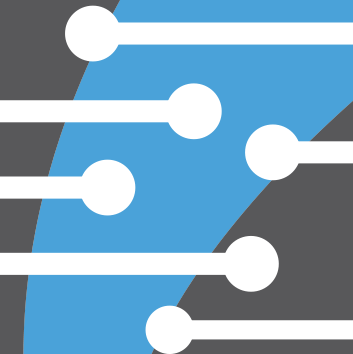- Technology
- SEE MORE
- classical
- general
- talk
- News
- Family
- Bürgerfunk
- pop
- Islam
- soul
- jazz
- Comedy
- humor
- wissenschaft
- opera
- baroque
- gesellschaft
- theater
- Local
- alternative
- electro
- rock
- rap
- lifestyle
- Music
- como
- RNE
- ballads
- greek
- Buddhism
- deportes
- christian
- piano
- djs
- Dance
- dutch
- flamenco
- social
- hope
- christian rock
- academia
- afrique
- Business
- musique
- ελληνική-μουσική
- religion
- World radio
- Zarzuela
- travel
- World
- NFL
- media
- Art
- public
- Sports
- Gospel
- st.
- baptist
- Leisure
- Kids & Family
- musical
- club
- Culture
- Health & Fitness
- True Crime
- Fiction
- children
- Society & Culture
- TV & Film
- gold
- kunst
- música
- gay
- Natural
- a
- francais
- bach
- economics
- kultur
- evangelical
- tech
- Opinion
- Government
- gaming
- College
- technik
- History
- Jesus
- Health
- movies
- radio
- services
- Church
- podcast
- Education
- international
- Transportation
- Other
- kids
- podcasts
- philadelphia
- Noticias
- love
- sport
- Salud
- film
- and
- 4chan
- Disco
- Stories
- fashion
- Arts
- interviews
- hardstyle
- entertainment
- humour
- medieval
- literature
- alma
- Cultura
- video
- TV
- Science
- en
Communicating with Customers

Communicating with your customers is a difficult, yet necessary part of doing business. In this episode we discuss best practices when dealing with various types of customers.\nSegment 1 - Establishing Channels\nEstablishing which channels you're willing to talk on is critical\nSteer new customers to the proper channels that you check regularly (ie email, Twitter DM, phone call, etc.) so that you don't miss out on potential business\nMake sure that you check your unused channels on occasion (maybe weekly) in order to ensure nobody has reached out to you on those channels mistakenly and steer them towards the channels that you do use\nSteering customers to the correct channels is as easy as stating which communication method you prefer in meetings, in your social media bio/profile, or starting the conversation on your method of choice (if you're starting the conversation)\nSegment 2 -\xa0Different Types of Communicators\nAs you work with clients you will start to understand how they work, but more importantly how they communicate and what they generally expect\nSome clients are entirely hands-off, while others want to be updated whenever something small is done\nThere\u2019s no clear cut way to determine which type of communicator your client is, other than working with them and slowly learning their expectations, just as you would with a friend, we all contact different friends in different ways depending on how we\u2019ve communicated with them in the past\nSome people are more face-to-face oriented and want in-person meeting more than emails or messaging, while others just want quick messages, emails\nIt\u2019s important that you don\u2019t necessarily go way out of the way for people (ie doing in-person meetings for something that a single email would deal with)\nSegment 3 - Dos and Don'ts\nDos\nEstablish a timeframe for a customer to contact you. Can be different between customers. Also take into account time zones and try to use them to your benefit to split up your day between customers. \nUse that timeframe to do callbacks as well if you miss a call\n\nBeing prompt and consistent in your communications\nBe professional and don\u2019t use needless slang, but keep in mind that as your relationship with the customer builds you can be more friendly and approachable\nTake responsibility for missed communication\nIf you forget to answer an email and your customer reminds you make sure to apologize and try not to make excuses \n\n\nDon\u2019ts\nDon\u2019t neglect answering just because you feel the customer won\u2019t like what you have to say. Be upfront and honest\nDon\u2019t answer customers emails right when they come in everytime, pick a time or a few set times a day when you answer emails. Obviously use discretion as some situations can be urgent\nDon\u2019t put yourself in situations where you will be overwhelmed with communications and all your accounts will suffer\n\n\xa0Web News - Social Overload\nSocial media is the vehicle that drives traffic to most online projects, with so many social media networks out there it can easily become a project just to keep up with posting new material, let alone making said material\nPhones manufacturers and other apps are now tracking usage on various apps, letting people know when they\u2019re using their phone a lot - watching too much YouTube for example\nSocial media, and especially our mobile devices have in a way made us \u201caddicts\u201d to social media and other apps since we can now access them everywhere\nWork on the parts of social media that you want to work out, make sure you put work into your craft, but you can\u2019t excel at everything\nIGTV content idea\nMaking content out of a single piece of content (ie get an article, photo for instagram, and an opinion tweet out of a single design idea)\n\nYou can find us on...\nFacebook\xa0|\xa0Twitter\xa0|\xa0Instagram\nRSS | Patreon | Spotify\nMedium\xa0|\xa0YouTube\xa0|\xa0GitHub\xa0\nReddit